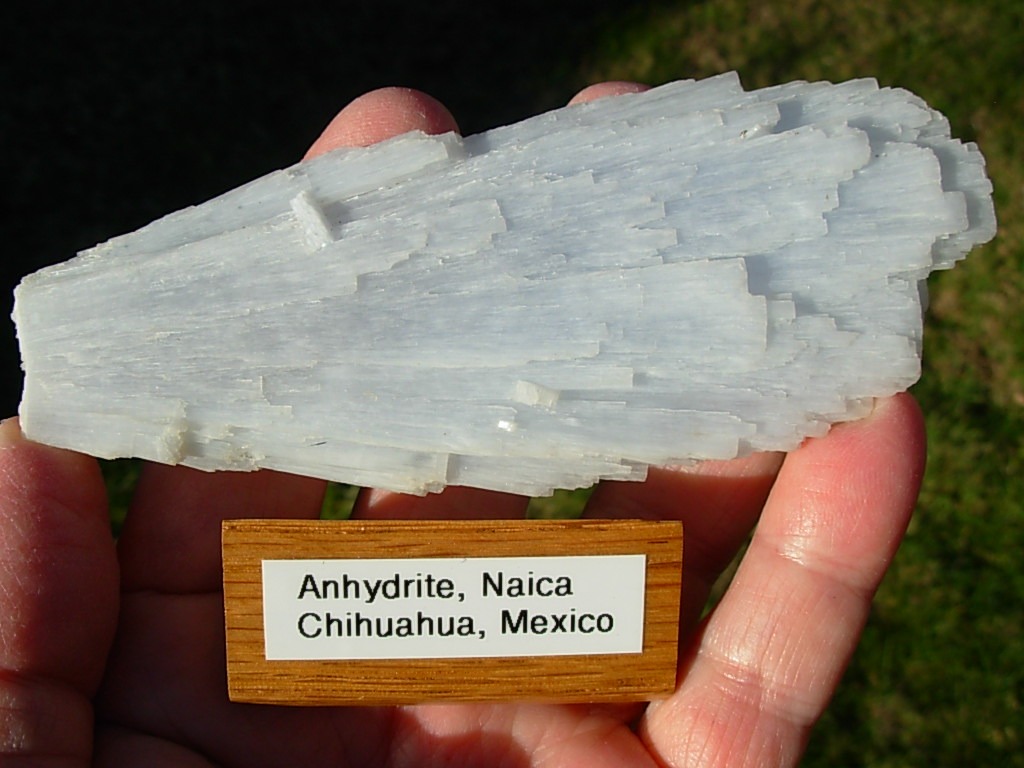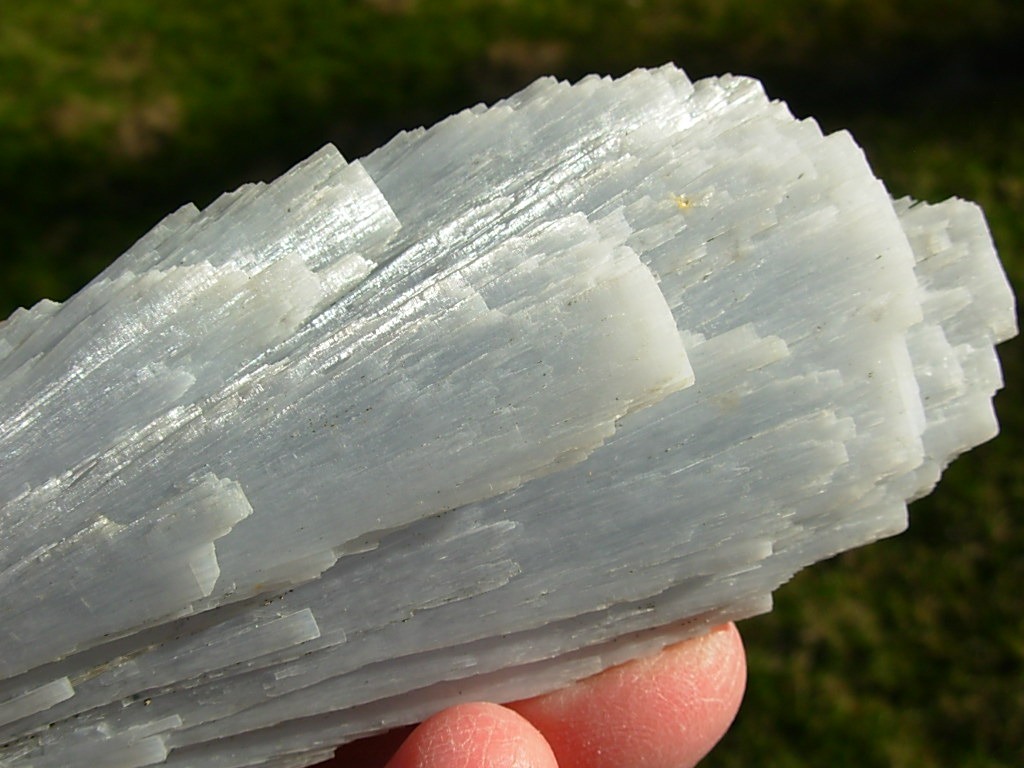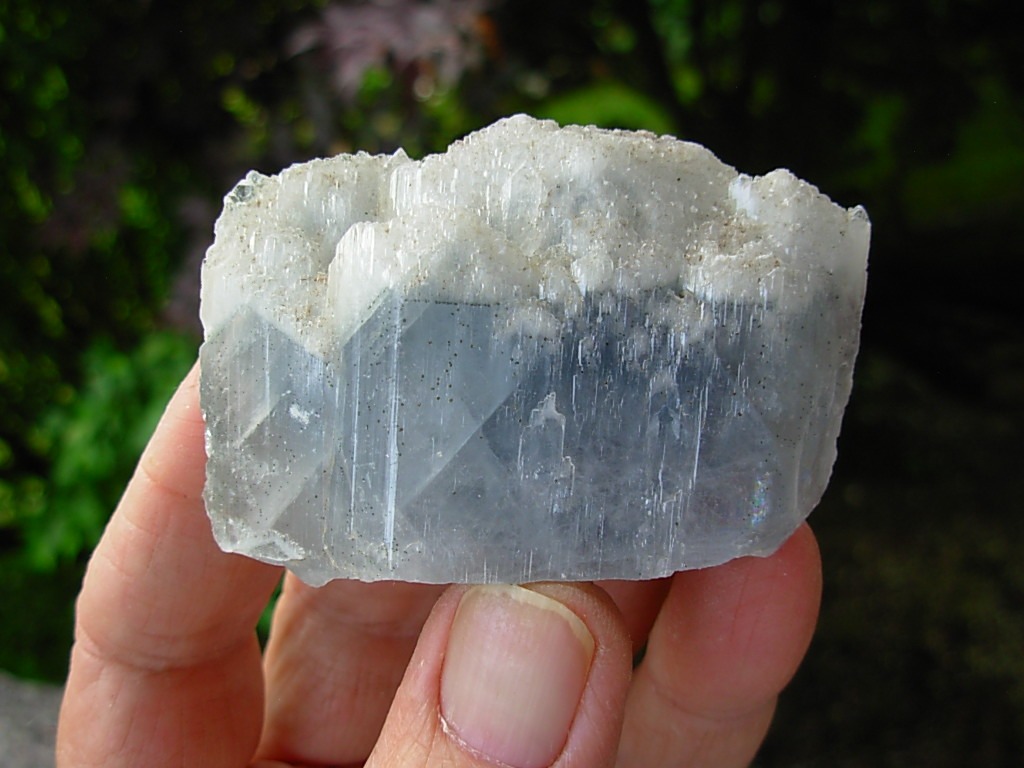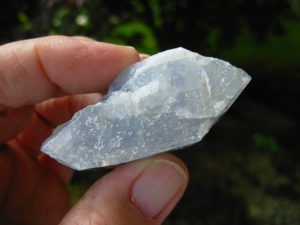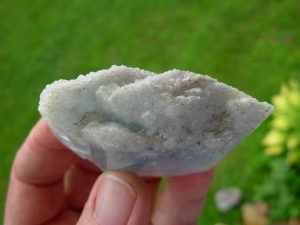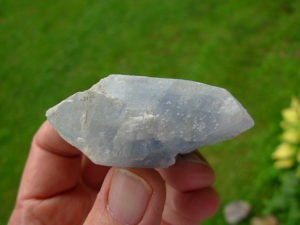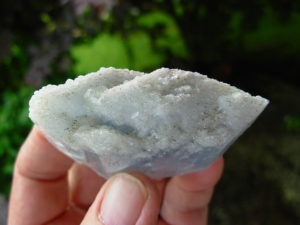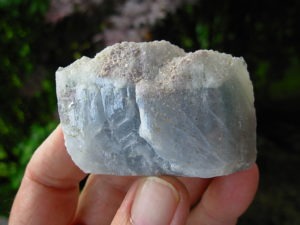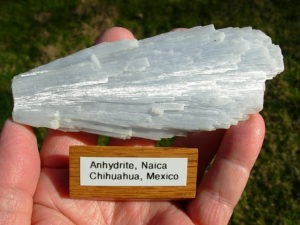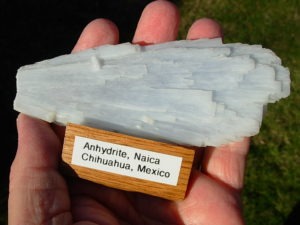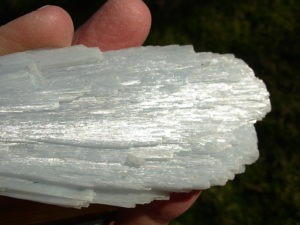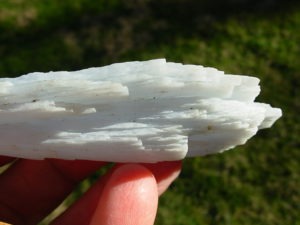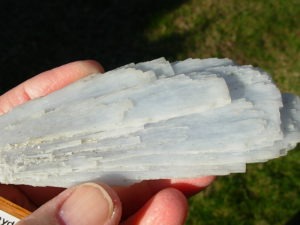Anhydrite
Anhydrite is a sedimentary mineral created from Gypsum and forms as large rock layers. The process of forming Anhydrite from Gypsum occurs through evaporative rejection of water occurring at the right temperature. This loss of water produces a reduction in volume of the rock layer and can cause the formation of vugs or caverns as the rock shrinks. This shrinkage also produces the common layered specimens available. When exposed to water, Anhydrite readily transforms to the more commonly occurring Gypsum, by the absorption of water. Quality specimens of Anhydrite were difficult to find until pockets of Anhydrite were found in Mexico. Anhydrite may be clear, white, grey to blues, light lilac tints are also found. Lilac blue Anhydrite is also referred to as Angelite.
The name anhydrite was given by A. G. Werner in 1804, because of the absence of water of crystallization, as contrasted with the presence of water in gypsum.
Item # ANH06170002
Shimmering Blue Anhydrite from Mexico
$42.00

This is an old stock piece of Blue Anhydrite from our personal collection which adorned our display case for years. This specimen is from Naica, Chihuahua, Mexico. Anhydrite, also known as Angelite, is a mineral that forms as a result of the alteration of an already formed mineral. In the case of Anhydrite it is the result of Gypsum crystals losing their aqueous content, thus pseudo morphing into Anhydrite crystals. These crystals are the desirable pale blue color. All photos taken dry, in natural sunlight with a Nikon CoolPix L1 camera.
This specimen weighs 4.6 oz or 0.28 lbs (131g) and measures 2.4 x 1.6 x 1 inches (6.3 x 4.1 x 2.5cm)
Item # ANH02136591
Shimmering Anhydrite from Mexico
$42.00

This is an old stock piece from our personal collection which adorned our display case for years. This specimen is from Naica, Chihuahua, Mexico. Anhydrite, also known as Angelite, is a mineral that forms as a result of the alteration of an already formed mineral. In the case of Anhydrite it is the result of Gypsum crystals losing their aqueous content, thus pseudo morphing into Anhydrite crystals. These crystals are usually white, gray, pale blue or colorless. All photos taken dry, in natural sunlight with a Nikon CoolPix L1 camera.
This specimen weighs 3.94 oz or 0.24 lbs (112g) and measures 4.6 x 1.7 x 0.78 inches (11.8 x 4.5 x 1.8cm)

